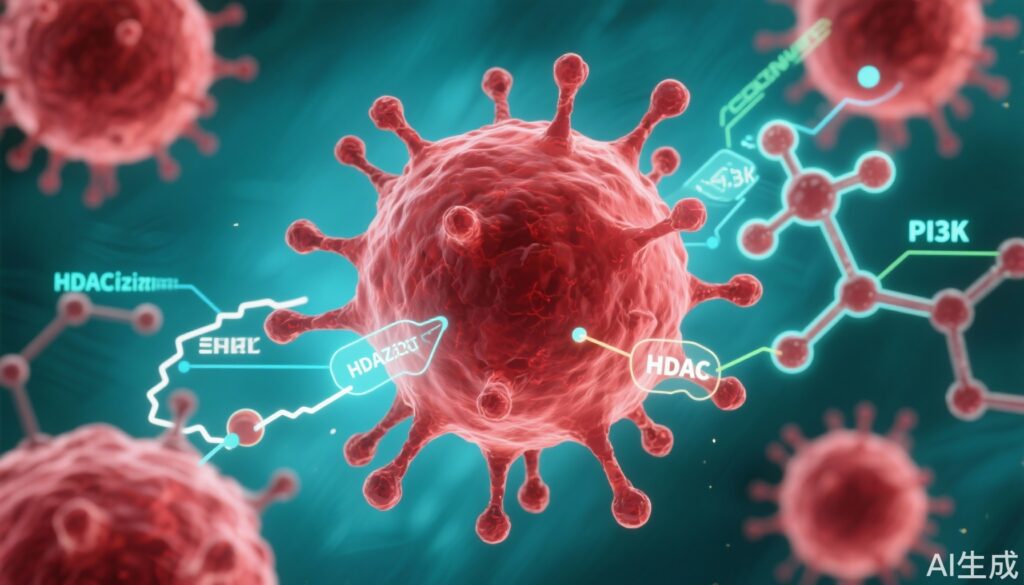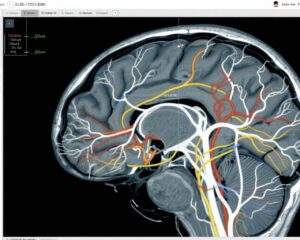Highlight
– Linperlisib, a PI3Kδ inhibitor, combined with chidamide, a histone deacetylase inhibitor, was studied in a phase 1 trial for relapsed or refractory cutaneous T-cell lymphoma (r/r CTCL).
– The combination demonstrated a manageable safety profile with no dose-limiting toxicities and predominantly mild to moderate adverse events.
– The objective response rate was 59.1%, including 2 complete responses, indicating promising efficacy in heavily pretreated patients.
– Median progression-free survival was 5.4 months, with a disease control rate of 86.4%, suggesting durable disease stabilization.
Study Background and Disease Burden
Cutaneous T-cell lymphoma (CTCL), comprising primarily mycosis fungoides and Sézary syndrome, represents a rare group of non-Hodgkin lymphomas characterized by malignant T-cell proliferation of the skin. Advanced or relapsed/refractory (r/r) CTCL is notoriously difficult to treat with limited effective systemic therapies. Existing treatments often provide modest efficacy with significant toxicities and limited durability. Consequently, the development of novel therapeutic strategies that target key oncogenic pathways with enhanced efficacy and tolerability continues to be an unmet medical need. The phosphoinositide 3-kinase delta (PI3Kδ) pathway along with epigenetic regulation via histone deacetylation are implicated in CTCL pathogenesis, providing a rationale for combining linperlisib (a PI3Kδ inhibitor) and chidamide (an HDAC inhibitor) to target complementary pathways and potentially improve outcomes.
Study Design
This prospective, single-arm, phase 1 nonrandomized clinical trial was conducted at a tertiary referral hospital in China between May 1, 2023, and March 6, 2025. Twenty-two patients with histologically confirmed advanced r/r CTCL (19 with mycosis fungoides, 3 with Sézary syndrome) were enrolled consecutively, all with an Eastern Cooperative Oncology Group (ECOG) performance status of 0 to 2. Patients had received a median of three prior systemic therapies (range, 1–7). The trial used a 3 + 3 dose-escalation phase of oral linperlisib administered once daily at 40 mg, 60 mg, or 80 mg, combined with chidamide 20 mg twice weekly; this was followed by a dose expansion cohort at the recommended phase 2 dose. Treatment continued until disease progression, unacceptable toxicity, or withdrawal.
Key Findings
Safety and Tolerability
No dose-limiting toxicities (DLTs) occurred, establishing the maximum tolerated dose (MTD) of linperlisib at 80 mg once daily in combination with chidamide. The most common treatment-related adverse events were mild to moderate (grade 1–2) and included nausea (36.4%), pruritus (31.8%), and skin rash (27.3%). Grade 3 adverse events occurred in 22.7% of patients but no grade 4 or 5 events were reported, indicating an overall manageable safety profile.
Efficacy
The primary efficacy endpoint, the objective response rate (ORR), was 59.1% (13 of 22 patients; 95% confidence interval [CI], 38.7%–76.7%). This included two complete responses and 11 partial responses. Furthermore, the disease control rate (DCR), encompassing all patients achieving complete response, partial response, or stable disease, reached 86.4%. The median progression-free survival (PFS) was 5.4 months, which compares favorably with historical controls for r/r CTCL. These results are especially notable given the heavily pretreated population and the inclusion of advanced mycosis fungoides cases, which often harbor poor prognosis.
Comparative Context
Current systemic options for r/r CTCL, including single-agent HDAC inhibitors or PI3K inhibitors, typically demonstrate moderate response rates (generally 20–35%) and limited PFS durations. The combination strategy here, targeting both the PI3Kδ pathway and epigenetic regulation, may synergize mechanisms to enhance anti-lymphoma activity without markedly increasing toxicity.
Expert Commentary
This trial’s findings underscore the potential of combining targeted therapies with complementary mechanisms in CTCL, a field with a critical need for improved systemic treatments. By simultaneously inhibiting PI3Kδ—a key driver in lymphoma cell survival—and modulating gene expression through HDAC inhibition, this regimen may address tumor heterogeneity and resistance mechanisms more effectively. The manageable safety profile supports outpatient all-oral administration, improving patient convenience and adherence.
However, the study’s limitations include the small patient number and lack of a comparator arm, which precludes definitive conclusions on relative efficacy. The median follow-up (8.9 months) and median PFS (5.4 months) suggest preliminary durability, but longer-term data and evaluation in randomized phase 2 or 3 trials are essential to confirm benefit and assess survival impact. Additionally, biomarker analyses elucidating which patients benefit most from this combination could refine patient selection.
These promising early data warrant further investigation within larger, controlled studies and support the exploration of combination therapies in CTCL to overcome therapeutic resistance.
Conclusion
The phase 1 trial combining linperlisib with chidamide for relapsed or refractory CTCL demonstrates a promising efficacy and manageable safety profile. With an ORR of nearly 60% and a high disease control rate, this all-oral regimen addresses an unmet need for more effective treatments in advanced CTCL, particularly mycosis fungoides. Future randomized studies should validate these findings and potentially establish this novel combination as a new therapeutic option in the CTCL landscape.
References
1. Pang Z, Wang Y, Liu Z, et al. Linperlisib Plus Chidamide in Relapsed or Refractory Cutaneous T-Cell Lymphoma: A Nonrandomized Clinical Trial. JAMA Dermatol. 2025 Jul 2:e251926. doi:10.1001/jamadermatol.2025.1926.
2. Kim YH, Willemze R. Cutaneous T-cell lymphoma: 2018 update on diagnosis, risk-stratification, and management. Am J Hematol. 2018;93(5):686-700.
3. Querfeld C, Rosen ST, Guitart J. Cutaneous T-cell lymphoma: basic science and clinical management. J Natl Compr Canc Netw. 2013;11(7):753-764.
4. Prince HM, Duvic M, Pinter-Brown L, et al. Phase II study of romidepsin in patients with cutaneous T-cell lymphoma. J Clin Oncol. 2010;28(29):4480-4487.
5. O’Connor OA, Wright J, Moskowitz C, et al. Belinostat in relapsed or refractory peripheral T-cell lymphoma: pivotal phase IIb study. J Clin Oncol. 2015;33(23):2492-2499.



